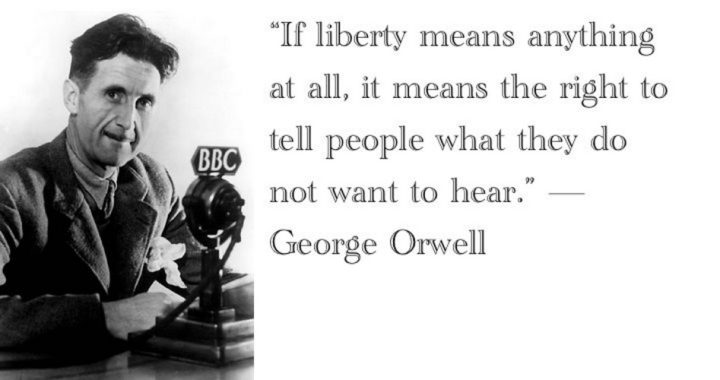
Many students on today’s college campuses are trigger-warning happy. No, this doesn’t generally have anything to do with guns, although it on occasion may. But it just as likely may concern racism, sexism, classism, able-bodyism, heterosexism, the Constitution, Pokemon Go, white men, or just about anything else.
What are trigger warnings? As columnist Jonah Goldberg explained in a humorous 2014 piece, “They started on left-wing and feminist websites. Like a ‘spoiler alert’ in a movie review or a more specific version of the movie rating system, trigger warnings are intended to alert very sensitive people that some content might set off, or trigger, their post-traumatic stress disorder or simply deeply offend some people. According to most accounts, this was a conscientious accommodation of people who’d been raped or otherwise horribly abused.”
For instance, in deference to child-sexual-abuse victims, a subject might be introduced with “Trigger Warning: pedophilia.” But it didn’t end there. Not only did the practice migrate to college campuses, it also metastasized. As Goldberg further wrote, “Trigger warnings were provided for an ever-increasing, and ridiculous, list of ‘triggers.’ For example, one website offers a trigger warning that it contains images of small holes, lest it terrify people suffering from trypophobia, which is — you guessed it — a fear of clusters of small holes. Another website warns visitors that it will not tolerate any debate over the validity of its trigger warnings.”
And just this Monday, undergraduate Toni Airaksinen wrote about the latest trigger-warning degeneration, providing examples from her school, Barnard College. Barnard, a private women’s institution in Manhattan, also could be known as Snowflake Central — and it has the trigger warnings to prove it.
One example is Pokemon GO, which could traumatize students because, supposedly, it’s a “racist” and “classist” game. In fact, it’s “ableist,” too, requiring locomotion and discriminating, let’s say, against Jabba the Hut. And here I thought the game was just dumb.
Going from dumb to dangerous, there’s our traumatic Constitution. While studying the document was once considered a civic obligation, it now needs a trigger warning, writes Airaksinen, “because it could prompt thoughts of oppression, persecution, genocide, and other social ills,” especially in minorities. Of course, it should prompt thoughts of freedom and civil rights and is only associated with negatives when people are wrongly conditioned. There was a time when such irrational fears were labeled a phobia.
Then there’s white fright. As Airaksinen informs, “Contemporary feminism deems men as oppressors and threats. And in the hierarchy of oppressors, white men sit atop the food chain. So not only do I come across trigger warnings on posts about men — what they’ve said or done — but I also saw this one: ‘TW: white men’ — used on an article on fraternity brothers behaving badly.” Question: Would the Barnard snowflakes introduce a story about the “knockout game” or a flash mob with “TW: black men”?
The police are traumatic, too, with Airaksinen providing the example, “Trigger warning: Just seen on Broadway Ave and 116th Street, NYPD vans. Stay inside!” Yes, those hell-raising Barnard girls must ensure the cops aren’t around before whipping out their shivs and rumbling. Conservatives also may scare the Barnard bunch, as anyone “to the political right is considered not just bad, but dangerous,” writes Airaksinen. Thus does she see cautions such as, “trigger warning: Trump, racism.” Then there’s the “traditional male/female binary,” which to the snowflakes isn’t biology but “oppressive,” says Airaksinen. She elaborates, consequently, “it may be triggering to ask a female student if she wants children when she’s older, because to ask would be to play into the stereotype that women have an inherent maternal instinct.”
It’s also notable that Barnard is a women’s college. Isn’t this supposedly a “girl power” age? Why do these young ladies need such emotional coddling? Goldberg mentioned this contradiction, writing, “We live in a culture in which it is considered bigotry to question whether women should join combat units — but it is also apparently outrageous to subject women of the same age to realistic books and films about war without a warning?” He concluded with, “I do wish these people would make up their mind. Alas, that’s hard to do when you’ve lost it.”
And true education is being lost as well. Responding to a student who complained that he felt “victimized” by a chapel sermon, Oklahoma Wesleyan University president Dr. Everett Piper wrote an inspired, sagacious open letter to his student body entitled “This Is Not a Day Care. It’s a University!” In contrast, though, most academics merely fiddle while scholarship burns and is replaced by feelings-oriented folderol. The result is that trigger warnings can be triggered by anything, and to “cite them all would be like trying to list all the ‘isms’ — it’s an endless parade of affronts that seemingly has no end in sight,” as Airaksinen put it.
And this is the peril of pandering to the subjective. It’s one thing if warnings are based on the objective, an example being obscene imagery, which violates the virtue of chastity. But disconnected from Truth and left with little but feelings, it’s now simply a matter of whose feelings will prevail. A nation with 320 million people has 320 million sets of feelings, yet it’s impossible to have millions of proscriptions based on emotional hang-ups. So we warn of some things (e.g., conservatism, classic books), thus demonizing them, while protecting what’s politically correct.
There’s also great danger here, beyond the failure to instill a necessary toughness in the young. How often I’d hear in elementary school, “Sticks and stones may break my bones, but names will never hurt me.” Of course, we all know that words can cut and bruise feelings. But the teaching had an all-important purpose: instilling the idea that tolerance for discourse we don’t like is a prerequisite for free speech.
Yet it doesn’t seem the young hear this saying much anymore. Instead, “higher education” — meant to be an arena for vigorous debate and exploration of Truth — allows trigger warnings and “safe spaces,” places where students are “protected” from contrary views. No longer understanding that the “truth hurts” (at least sometimes), youth are instilled with the notion that there’s some right to not be offended. They now behave as if something’s status as offensive to them — with “That’s offensive” generally meaning only “I don’t like what you’re saying!” — is enough reason to ban it. And free speech cannot long survive this mentality’s rise.
By the way, four years’ tuition, room, board, and other fees at Barnard College amount to a cool quarter of a million dollars. Talk about financial trauma. Is there a caution, “Trigger Warning: pricey propaganda mill”?



